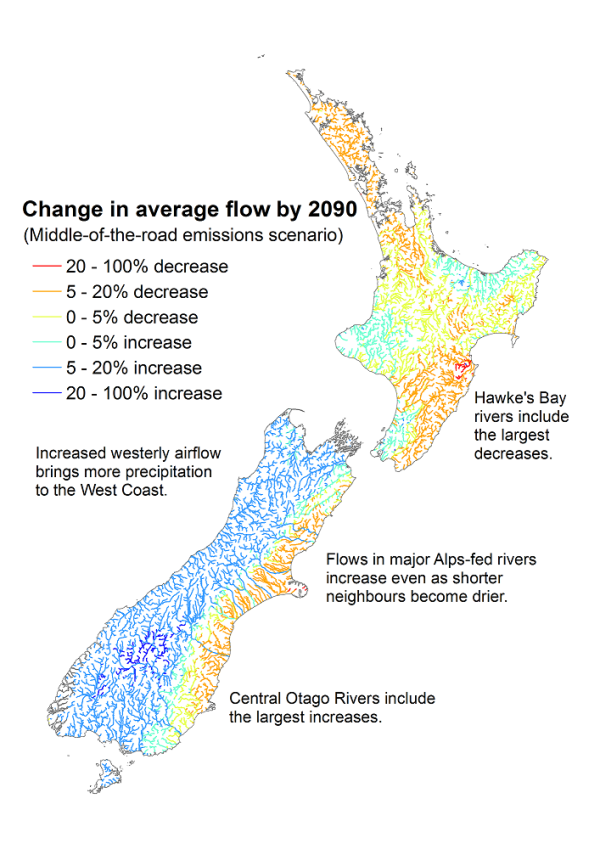Climate change is one of the defining societal and environmental challenges of the 21st century, for New Zealand and the planet.
Many aspects of our environment—such as sea level, air temperature, rainfall—have begun to change from their historical and natural norms globally due, largely, to the burning of fossil fuels. These changes are expected to grow larger in the coming decades. One of the many potential impacts climate change has for New Zealand is a change in our water cycle and freshwater resources. This has implications for wide sections of New Zealand—agriculture, biological conservation, Maori, hydropower generation, tourism, and so on.
To help New Zealanders understand climate change and prepare for its freshwater effects NIWA has developed an active research programme. Taking state-of-the-art climate change projections of the future, NIWA draws on its suite of hydrological models to infer changes in river flow, snow pack, and soil moisture among other environmental variables. This in turn sheds light on how flooding in a river may change, or whether water abstraction for irrigation will come under more or less pressure. NIWA continues to refine the underpinning modelling while using the latest climate change projections.
This map depicts one potential effect of climate change by the 2090s using a simple river flow model and based on 2007 climate change projections.
In a warmer world New Zealand is exposed to more westerly airflow from the Tasman, and few easterlies. This would bring more precipitation to the Southern Alps in particular, resulting in higher river flows in rivers with alpine sources. This is seen quite vividly as Canterbury’s major rivers become wetter on average while their shorter nearby rivers tend to dry. The largest decline, in percentage terms, centres on parts of Hawke’s Bay.
NIWA continues to develop its modelling capability in this area, putting our high performance computing facility to good use with more advanced models and the latest climate change projections. As we gain an ever improving knowledge of the freshwater impacts of climate change we can begin to develop ever more targeted adaptation strategies.


